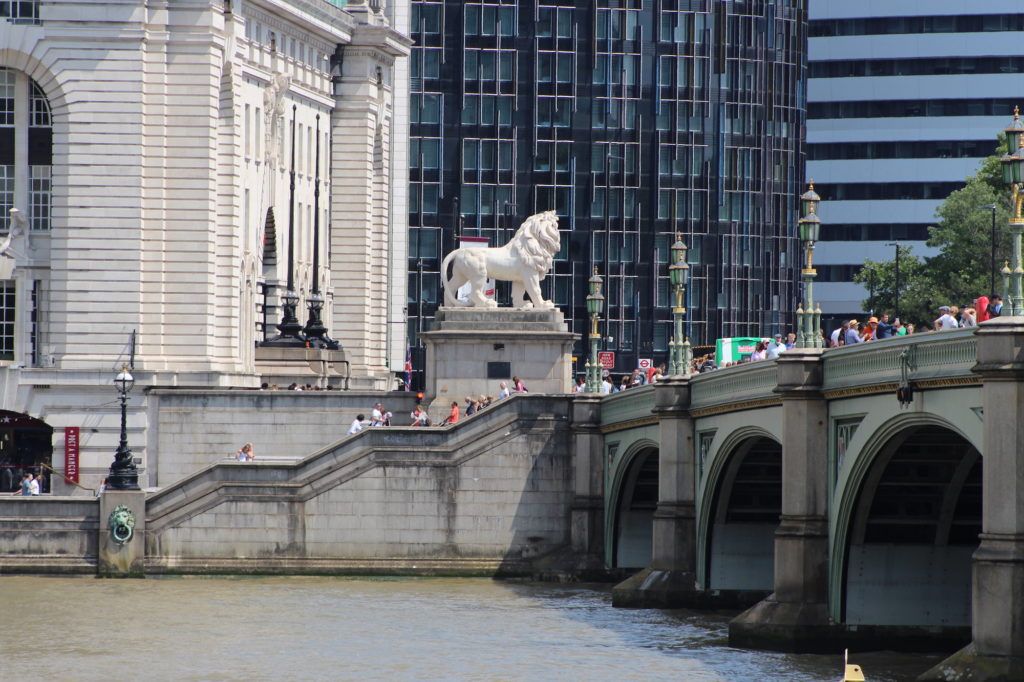Surviving war and redeployment, the South Bank Lion has become a cherished monument.
Standing majestically on the east side of Westminster Bridge is a white, sculptured lion looking down over the traffic and the thousands of commuters and tourists that stream in and out of the city every day.
Known as the South Bank Lion it has become one of London’s favourite landmarks since it was lifted onto its plinth in 1966. Yet its history doesn’t begin there. It was sculpted by William F. Woodington for James Goding’s new Lion Brewery built on the South Bank between 1836 and 1837.
The imposing five storey brewery, designed by Francis Edwards, had an impressive river frontage dominating a stretch of the South Bank between the Hungerford railway and Westminster bridges. And Woodington’s 13 tonne lion, standing on top of the brewery, supported on its substantial base, became a well-known Thames-side landmark from the start. An engraving dated 1837 depicts an ‘aquatic festival’ on the Thames to celebrate the opening of the brewery and the lion is centre stage on top of the building.
Londoners and visitors noticed it as they passed, among them Emile Zola, exiled from France, who remembered seeing it from the room where he was staying at the Savoy. He describes the morning mist slowly parting, giving the impression that the lion was suspended in mid air. “It amused me greatly […] to see the British lion waiting to bid us good day.”
The lion is made out of Coade stone a durable, very strong weather resistant artificial stone that was manufactured close to the brewery. Businesswoman Mrs. Eleanor Coade perfected the recipe and the firing process, and her firm became the very successful Coade’s Artificial Stone Manufactory. Believed to have been lost since the closure of the factory in the mid-nineteenth century, the recipe has been rediscovered, improved, and is now manufactured by Coade Ltd. in Wiltshire.
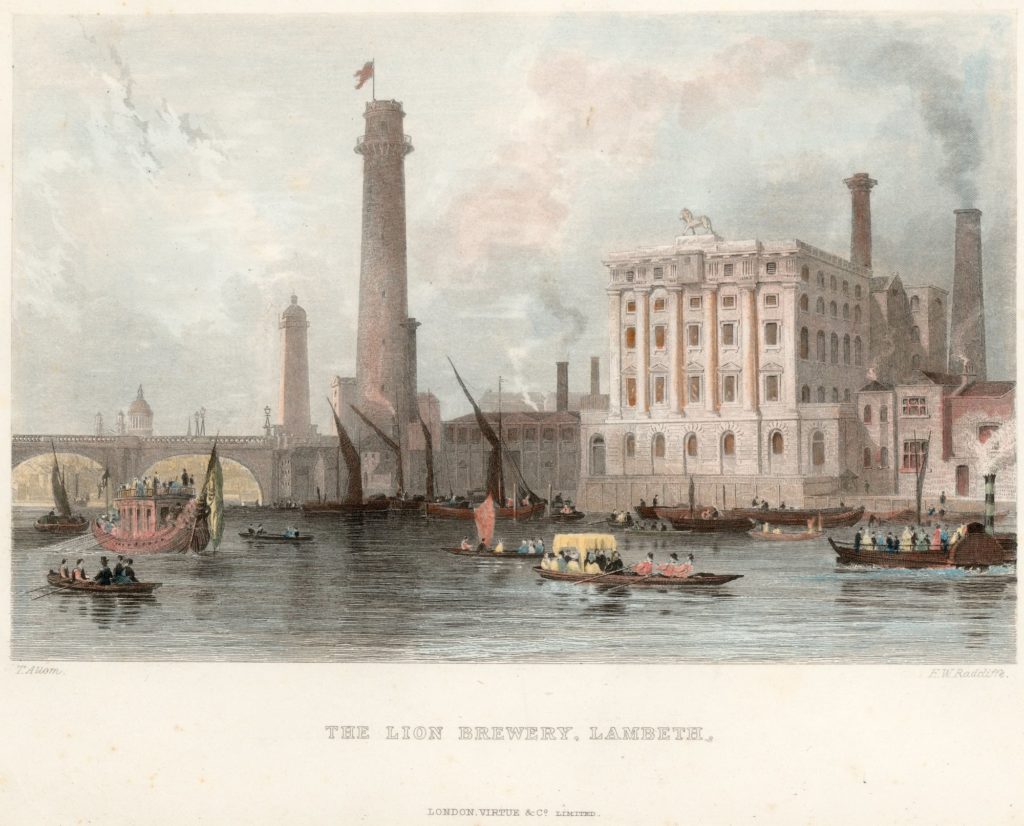
From prints dated around 1837, it appears that the lion began its life in the original white Coade stone but a letter to The Times dated December 1st, 1948, from Geoffrey Hoare, whose family took over the Lion Brewery in 1924, makes it clear that the lion had, at some stage been painted red. He writes that his family, who owned the much older Red Lion Brewery by St. Katharine Docks “had thought about objecting to the ‘Lion Brewery’ having their lion red, but did not bother about it as ours was so much better known in the brewing trade.”
In 1931 the main building was badly damaged by fire but the lion survived and remained on top of the parapet. The site was used by the London Waste Paper Company, then stood derelict, miraculously escaping destruction throughout the Blitz, while surrounding buildings were hit and razed to the ground. It was eventually pulled down in 1949, and the lion saved, to make way for the Royal Festival Hall, which was a major feature of the development for the Festival of Britain in 1951.
As plans advanced for the Festival, King George VI studied the details and expressed an interest in both this lion and a smaller one that had stood above the main entrance away from the river. After consultations, it was agreed by the London County Council that “in view of their historical and sentimental interest, as well as their intrinsic value, that the lions would be preserved” and incorporated somehow in the Festival of Britain. This was in no small part due to King George’s affection for these lions, which had survived the Blitz and symbolised the spirit of British resilience, so perfectly matching the theme of the Festival.
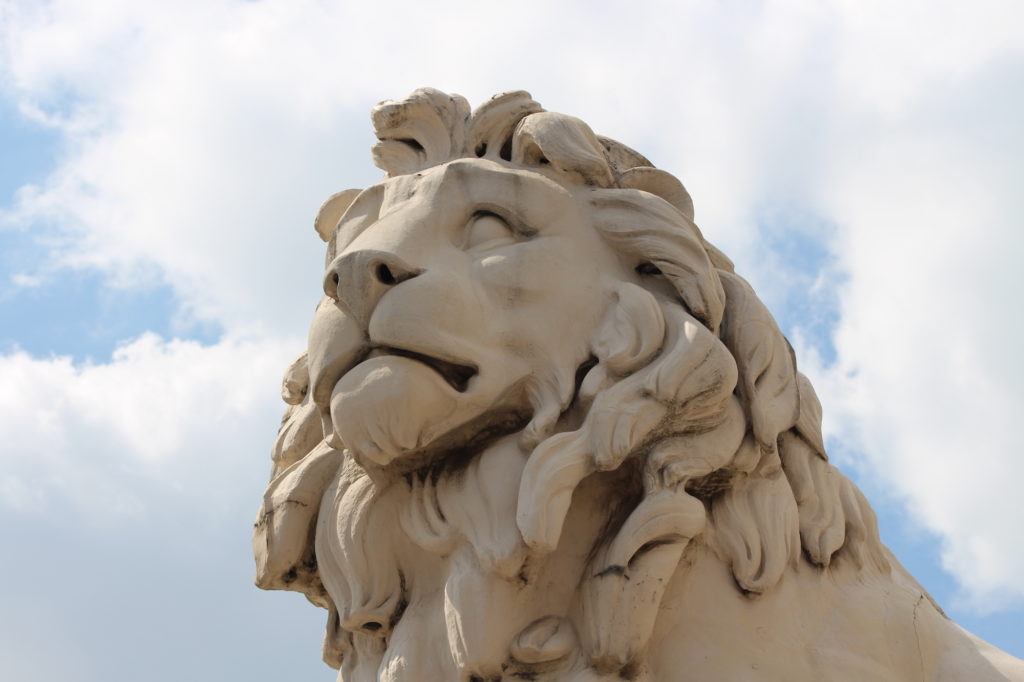
The smaller lion was eventually given to the Rugby Football Union in 1971, its centenary year, and now royally resplendent in gold leaf, it stands above the Lion Gate, behind the west stand at Twickenham.
The lowering of the lion from the old brewery rooftop in 1949 was very difficult. A journalist from the Manchester Guardian wrote that “the building looks as though it might crumble at any moment, and the lion in its cradle did not complete its journey to the ground that day.” As restoration began on the sculpture, a bottle was found within it containing a trade card from Routledge & Greenwood, once owners of the Coade building, with the name of the sculptor Woodington on the reverse. There were also some George IV coins, and underneath one of the lion’s paws were Woodington’s initials W.F.W. and the date, May 24th, 1837.
Now the magnificent lion that had watched over his stretch of the Thames for more than a hundred years found himself restored, cleaned, repainted in red gloss and set on a plinth outside Waterloo Station next to one of the entrances to the Festival of Britain. At the time this was a fitting place as the British Rail logo included a red lion as part of its design. A photograph belonging to the Borough of Lambeth archives shows the lion still in position in 1958. By 1966 however, in a letter to The Times, a representative of the Greater London Council explains that “British Railways need the lion’s present site” for redevelopment adding that “this majestic animal weighs several tons and moving it will be no easy task.”
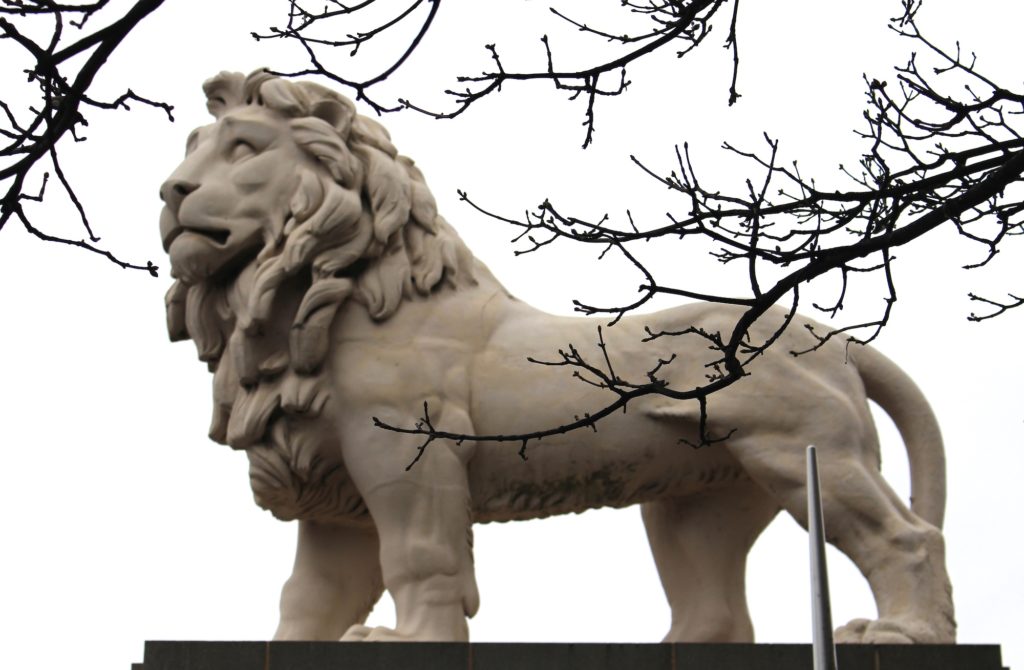
Indeed it was not easy but the lion was once again restored and carefully returned to its original white colour. A copy of The Times dated March 17, 1966 was added to the objects found in 1949 and replaced within the sculpture.
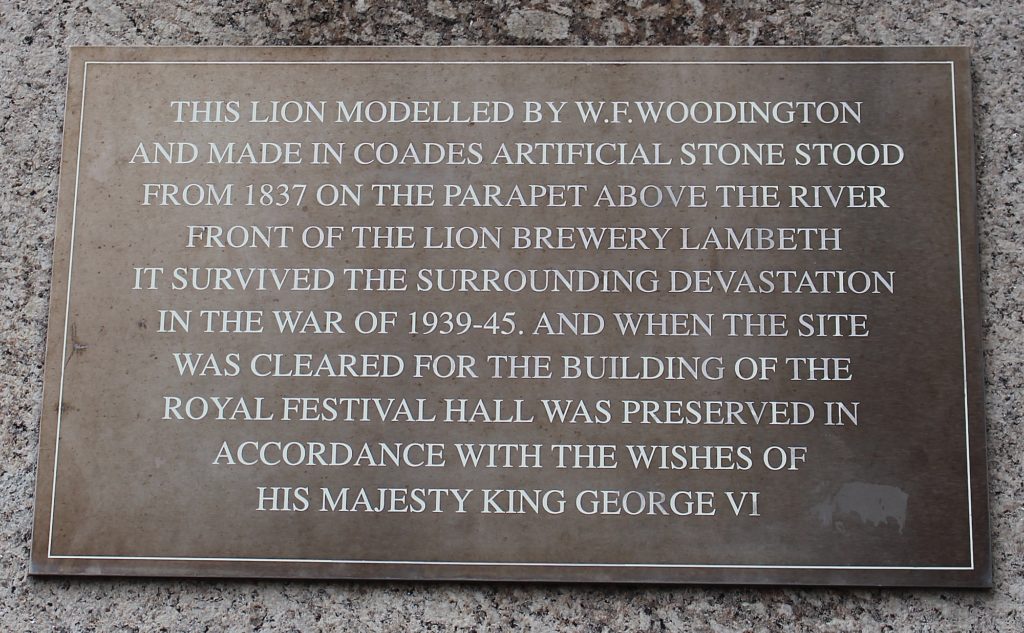
The move was completed on April 3rd, 1966 and in 1981 the lion, from then on known as the South Bank Lion was given protection with a Grade II* listing by English Heritage.
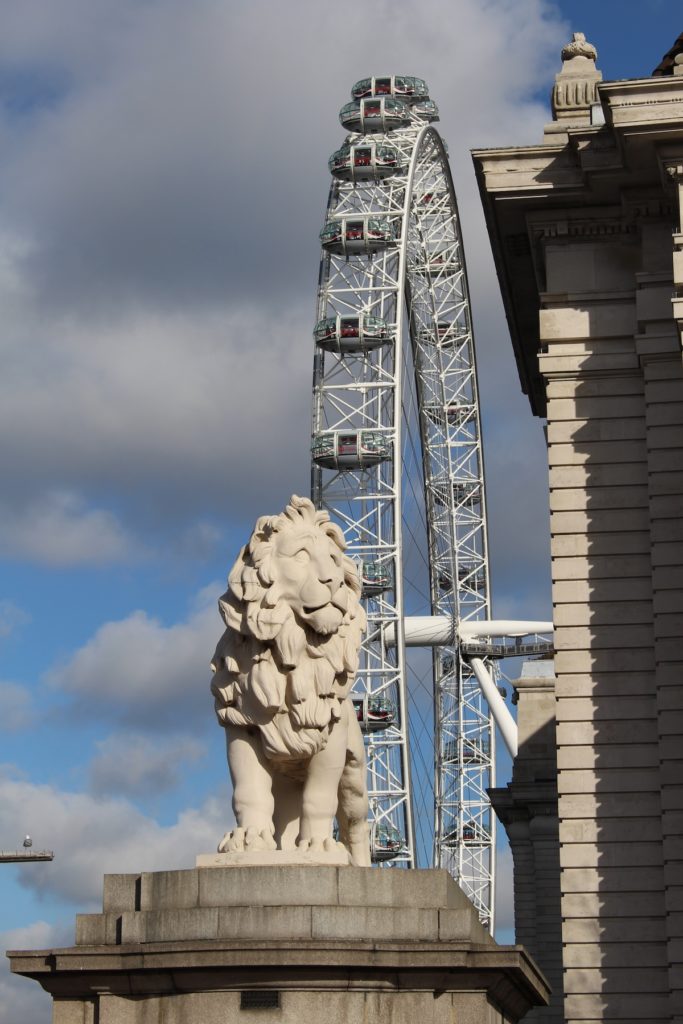
London, and particularly Westminster, is crowded with historical statues of varying quality and grandiosity, commemorating heroes, politicians and personalities, some of whom have faded from the public consciousness and others that will remain at the forefront of our history. But this noble lion is a symbol for all of us, and if you take the time to look at him, you will see that there is also something infinitely touching about his sad, world-weary eyes…
